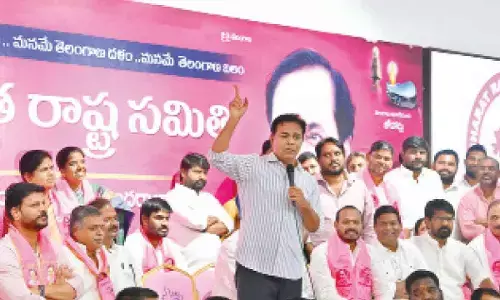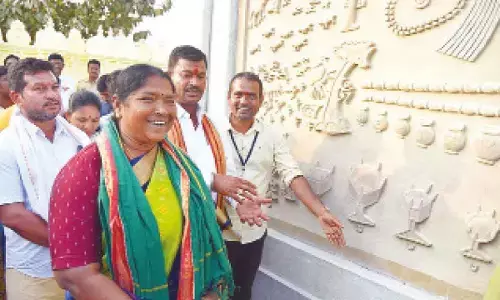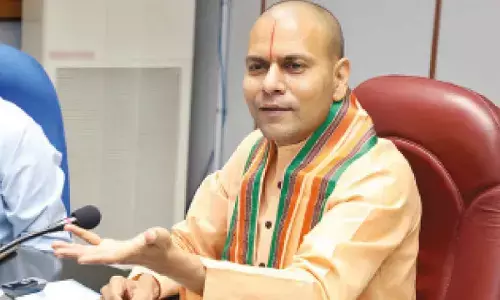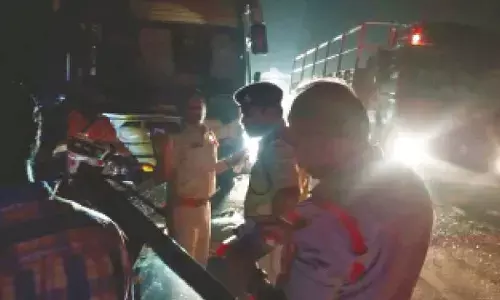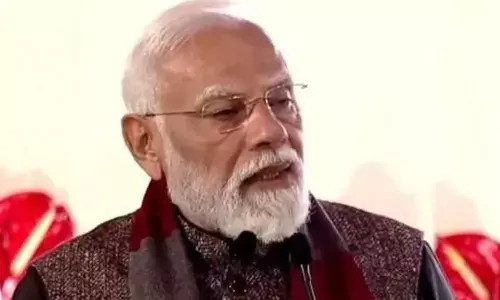Revisiting Kedarnath A real test of Faith

Revisiting Kedarnath A Real Test Of Faith. Ringed by rich green forests, with a gurgling waterfall in the vicinity, the tiny hamlet of Rambara perched halfway along the 14 km trek route to Kedarnath was until a year ago, the popular resting place for devotees.
Ringed by rich green forests, with a gurgling waterfall in the vicinity, the tiny hamlet of Rambara perched halfway along the 14 km trek route to Kedarnath was until a year ago, the popular resting place for devotees. The place housed around 100-150 shops and 4-5 hotels, to cater to the needs of the ever- swelling number of pilgrims. Today, as one embarks on the work-in-progress new trek route to Kedarnath and crosses the Mandakini by means of a makeshift bridge at Bhimbali (the new half way mark), Rambara, or rather where once Rambara existed, can be made out from the intermittent stretches of disfigured discoloured railings clinging to the mountainside. As of the place, nothing remains. NOTHING. The settlement was simply shaved off and slipped into the river during last years’ catastrophe which struck Kedarnath valley. It is really scary to try to guess the number of people washed away by the angry Mandakini River or worse still, who remain buried under 10 feet of mud and debris.

Though the government has managed to score a brownie point to the world by opening the Kedarnath yatra as per schedule, the situation on the ground paints a different picture. Repair work on the roads and bridges is still on and will continue for a long time. There is caution in air and among the people on account of the fragile condition of the mountains and the impending rains.
Earlier the vehicles used to go up to Gaurikund, but as of now the pilgrims have to park their vehicles at Sonprayag (6 km before Gaurikund) and use free shuttle service (jeep ride over a very rough and rocky terrain) to cover another three kilometre to reach Mankutia — the last stop for vehicles before Gaurikund. After that point, they will have to walk about 17 km to reach Kedarnath, up from the earlier 14km from Gaurikund. The newly-laid track from Bhimbali to Lyncholi on the right side of the river is yet to stabilize. Additionally, it is tough with some serious climbs and difficult to negotiate in the rains. It runs through dense forests, and is unsafe for lone travellers and even small groups. The track also crosses glaciers at a number of places and there are almost no resting places or even sheds in case it rains.

Majority of the hotels all along the route from Sonprayag to Kedarnath are locked and resemble haunted houses. The sight of the stranded vehicles at the parking lot at Gaurikund, left so, as the approach road has been washed away, serves as a chilling reminder of last year’s Himalayan Tsunami. However, if the vehicles had any emotions, they would most probably be feeling thankful about their fate compared to the thousands of their mates who were swept away.
We started from Sonprayag in the morning and reached Gaurikund by around noon. As I walked around the place clicking pictures, I sensed a faint but nauseating whiff in the air. Thinking it was my imagination at work; I turned around and asked my companions. They too confirmed of having smelled it - that beneath the debris, there's decaying matter that has not been excavated and buried properly. However, during the trip that would not be the first time my nasal powers would be put to test.

The scene at Kedarnath was even more spine-chilling and seemed straight out of a horror film. The temple, amidst much fanfare opened its doors to pilgrims this May. The structure had been spruced up, and its doors given a fresh coat of paint. Garlands of marigold festooned its facade, the large Nandi bull in front of the temple and the large rock behind, which was believed to have saved the temple from being swept away, were also honoured in a similar manner.
The temple, till a year ago, was situated at an elevation of about 5 feet from the nearby ground. It's all level now. So it is possible, that inside the debris covering the settlement at 5 feet height, there are bodies. It is equally possible that in the buildings covered in sand up to first floor and openings obstructed by rocks, there are bodies. I was under the impression that all this would have been cleared before the government opened the yatra. But, NO. Foul odour continues to emanate from buildings which are farther away from the main route to the temple and private hoteliers routinely stumble across skeletons while scavenging the spots what was once their source of livelihood.
What is equally alarming is the way the two rivers- Mandakini and Saraswati have changed course and are right now forcefully flowing together near the temple. Saraswati, the slim nondescript stream of yesteryear has morphed into a roaring Himalayan river. And, as per local predications, the monsoon of 2014 could turn out to be much worse for the area, with two rivers pummelling it from both sides. The rains are scheduled to strike in a few weeks and the area might face the same (or even worse) situation like last year due to breaking down of roads, overflowing of river banks and movement of debris.
The only silver lining is that “finally”, after a year, the government has declared a two-pronged strategy to restore Kedarnath. In the first phase, the two rivers Mandakini and Saraswati would be re-channelised and flood control measures taken, which includes building protection walls in and around the Kedarnath temple. In the second phase, the government would develop a new township at Lyncholi near Kedarnath for the rehabilitation of priests, businessmen and shopkeepers who were affected by the tragedy. All those buildings that have been declared unsafe at Kedarnath will be demolished and work for the stabilisation of slopes will also begin soon.
But “How Much” will ultimately happen and “When” - are the burning questions in everyone’s mind.
Regarding me, I’m not sure if I would want to go back, at least in the immediate future. For the administration, I have two recommendations. First and foremost: Stop the yatra/pilgrimage charade- it does not make sense to put to risk lives of so many people. Secondly, hand over the area to army or Border Roads Organisation ( BRO), let them excavate the dead, give them a decent burial and demolish all the crumbling buildings. It is extremely disgusting the manner in which we are treating our dead - by running a pilgrimage over what's left of their bodies.
The story of a tree falling is the story of thousands of scattered leaves. So is the scenario in Kedarnath: thousands and thousands of lives eliminated, dispersed and disturbed. They will take years to recover—if at all they do.
In a nutshell, just two words are enough to describe my trip and I'm ashamed of them -"tragedy tourism".


